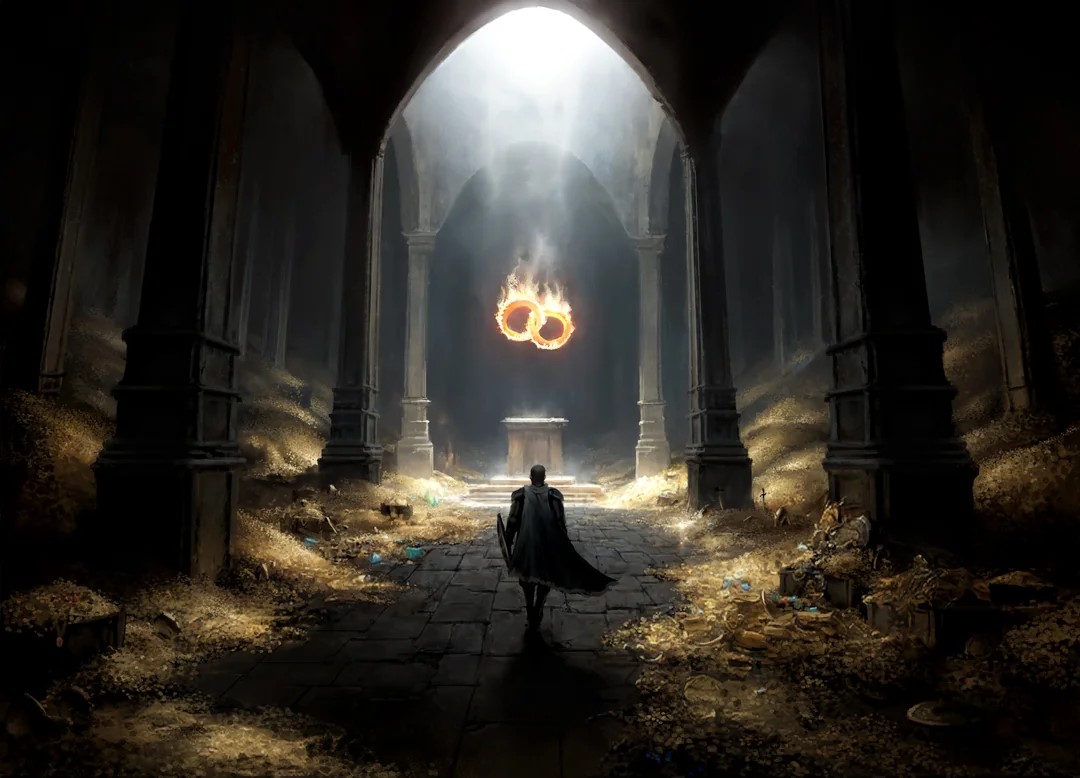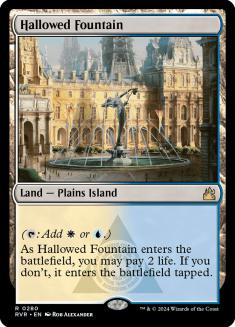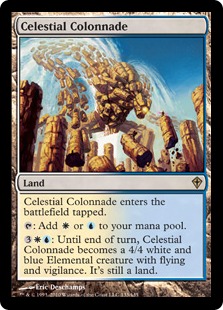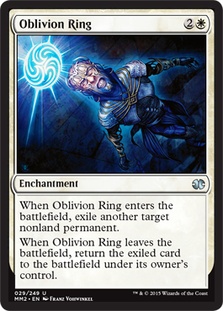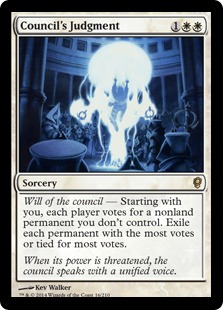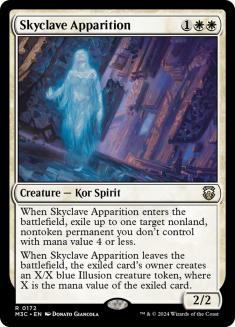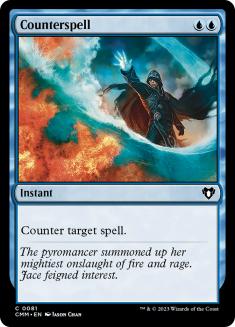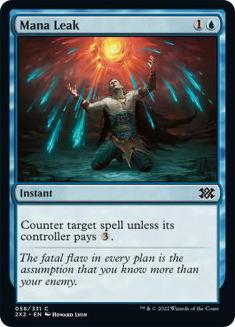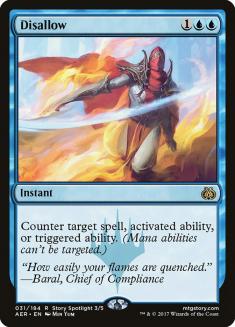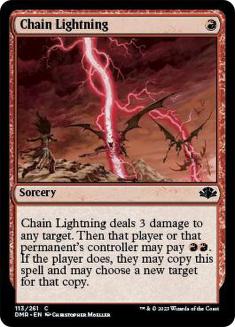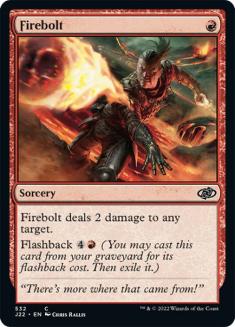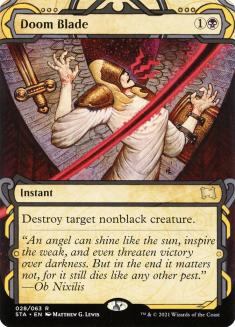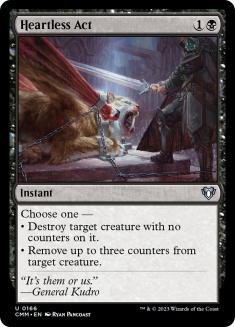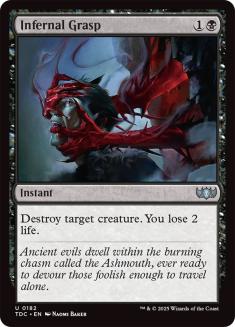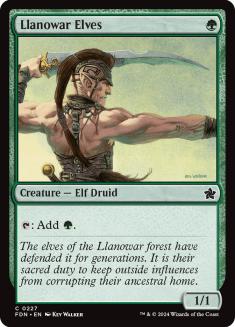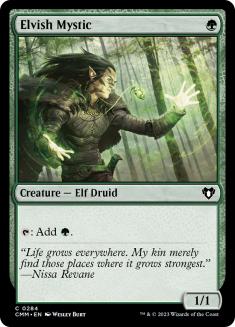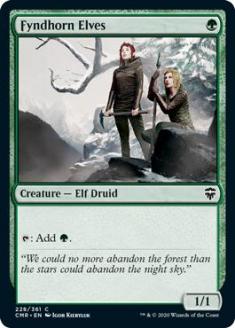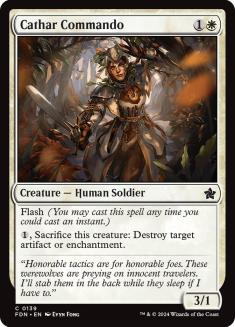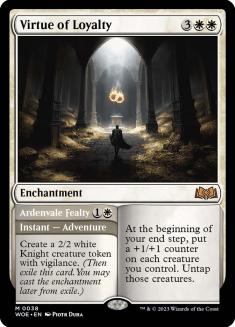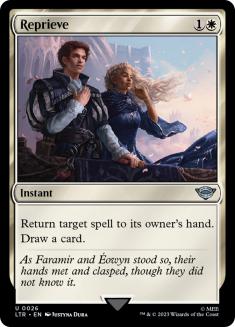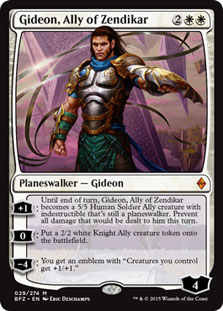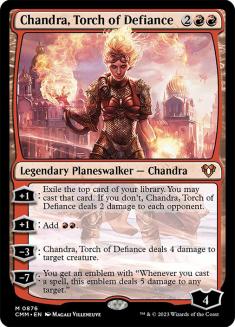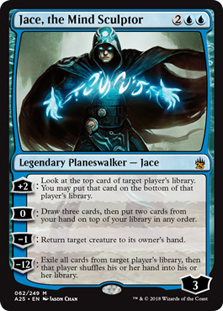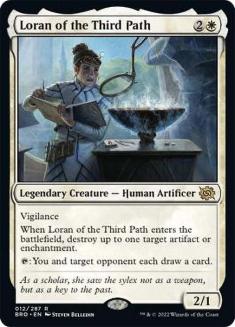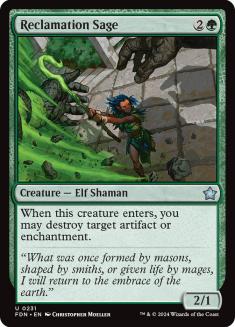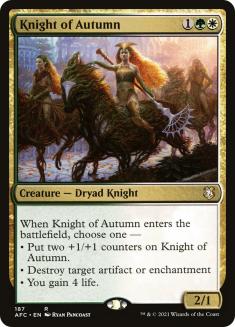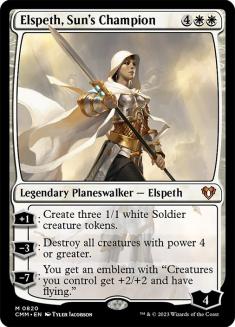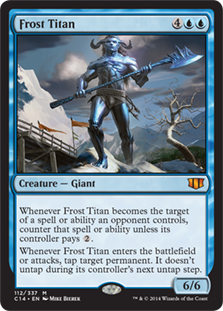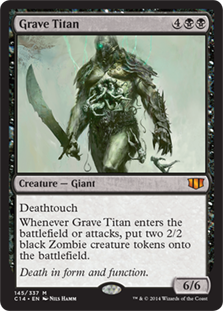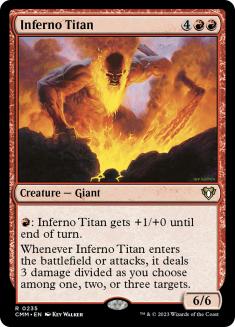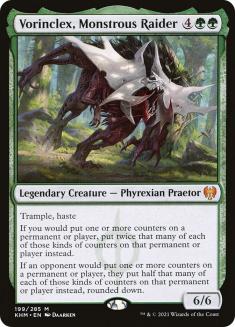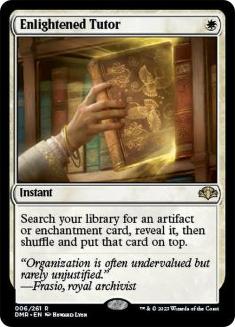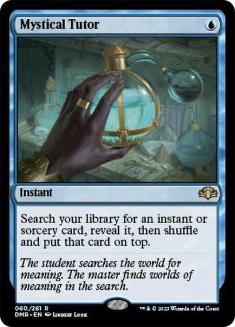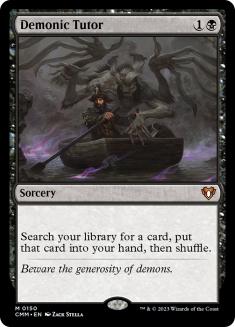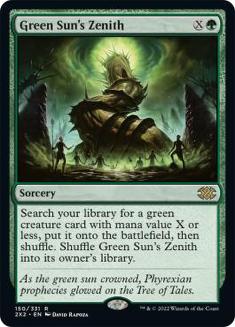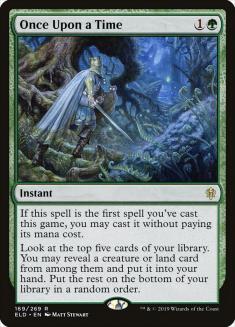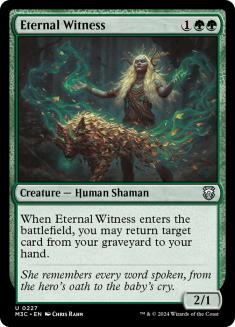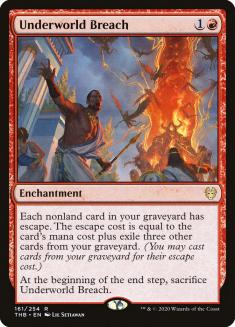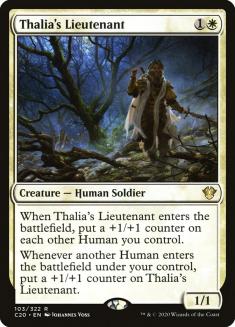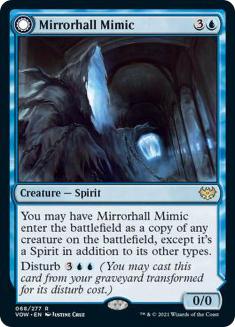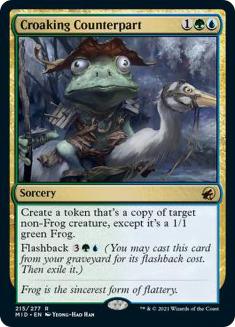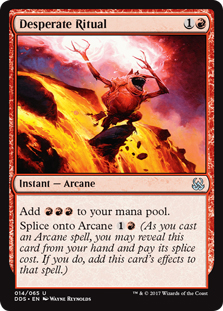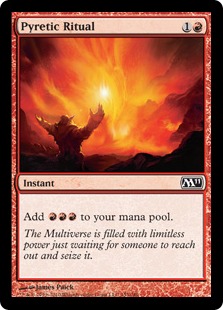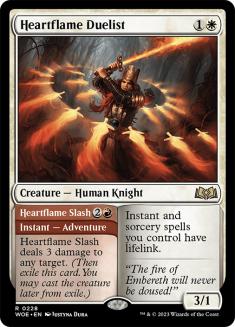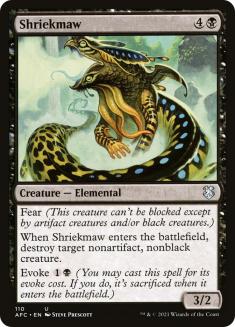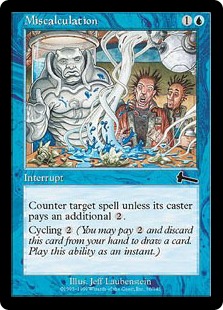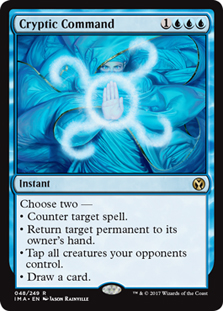Greetings, Cube enthusiasts! If you’ve looked ahead at the Magic Online (MTGO) schedule you know that we have a lot of digital Cubing coming down the pipeline, but this week is reserved for Wilds of Eldraine Limited. That gives me an opportunity to explore something a bit more off the beaten path with my article this week, and as such I’d like to offer some food for thought when it comes to redundancy in Cube. After ranking Heartflame Duelist as number 9 in my Top 10 Cubeable cards for Wilds I’ve had Heartflame Slash on the brain. Why am I excited to see Open Fire as an adventure when Lightning Strike gets a visceral negative reaction in me? Unpacking this quandary has led me to a lot of interesting thoughts on redundancy in Cube, how to utilize redundancy as a tool, and pitfalls to avoid in design. Let’s dig in!
What Do I Mean By Redundancy?
It’s always good to start by defining your terms, so let’s get that out of the way. I’ll be going over a few different kinds of redundancy today, but broadly I’ll be talking about examples of using multiple card slots in a Cube for the same purpose. Cubes are very commonly singleton formats, with some of the idea being to increase replayability by utilizing a lot of unique cards. There’s a balance to be struck between agency and variance here, and one tool for striking this balance is featuring multiple similar cards, functionally identical cards, or even just multiple copies of the same cards in some instances. Let’s get a little more specific now.
Redundancy of Effect
Whether it’s a stated or unstated preference, most players want their decks to do similar things from game to game. Even the most die-hard large Cube size fans who want to see as many different effects as possible are still choosing Cube over Momir Basic or some other more chaotic format because they want some agency in their games. Featuring multiple cards that do the same or similar things to give players access to the same effect across multiple cards is an important tool to facilitate this. To wit, I’ve never seen a Cube that didn’t employ any redundancy of this nature, with mana-fixing lands being the most common place to encounter it.
You’ll also generally see this kind of redundancy when it comes to archetype support and payoff cards. For example, Reanimator decks rely on having a range of both discard outlets and recursion effects. This sort of redundancy is the rule when it comes to supporting consistent archetypes, and it’s not difficult to come up with a long list of Cube archetypes that rely on having access to multiple cards that more or less do the same thing.
Beyond that, redundant effects help to establish color identity. Very commonly in Cube this means white gets a range of answers to non-land permanents, blue gets counterspells, black gets spot removal, red gets burn, and green gets mana acceleration.
This sort of redundancy is important for any fundamental aspect of an archetype or color, as players are just going to want access to a lot of that effect. Admittedly, my selections for the non-white colors are much more welcome forms of redundancy than my selection for white which is partly suggested by the mana value of these spells. White tends to deal a lot more in the sort of redundancy covered in the next section.
Redundancy on Curve
Somewhat different from redundancy of effect, redundancy on curve simply speaks to giving players access to enough things to do at relevant points on the mana curve. This is the backbone of the white column of most Cubes. Giving aggressive players access to enough creatures low on the curve and controlling decks options to spells up and down the curve is what makes nearly any white deck tick. It’s fair to say that cards like Isamaru, Hound of Konda and Savannah Lions is a sort of redundancy on effect, but the concept of redundancy on curve loops Mana Tithe into the spread, and is more meaningful in terms of actually laying out an aggressive deck.
Aggressive decks live and die based on the implementation of this type of redundancy, and similarly, control decks rely on having sufficient volume of both answers on curve and meaningful proactive plays as well. Redundancy on four mana planeswalkers, for example, is a big deal for enabling Control decks to turn the corner in many environments.
Notably I used examples here across three different colors where earlier I kept things to one color. This is because more aggressive decks naturally bias towards fewer colors whereas more controlling decks naturally bias towards more. Aggro decks often only care about hitting so many land drops and as such they really don’t want to worry about making the right land drops, and controlling decks will have more time and often enough play more lands, which makes them happier to support more colors.
In light of this, I pay a lot of attention to mana curve across colors, especially when it comes to cards for Midrange and Control decks. I often talk about three mana creatures being a slot that can get glutted, and if you’re tuning Selesnya’s place in your Cube that means you should be looking at all of the green, white, colorless, and gold Selesnya cards when you’re looking under the hood to make changes. I was talking to a friend about Selesnya cards in Vintage Cube the other day and I remarked that I’d cut almost all of them. He asked me about Knight of Autumn, and I relayed that I’m cold on the card because white has Loran of the Third Path and green has Reclamation Sage. Why would anybody play both colors for an effect that you have access to with either individual color?
You’ll also see this principal in action in my original Twobert design. The Cube features exactly one six mana payoff for every color because decks that want to cast six mana spells are going to have access to at least two of these cards, and it’s a bad spot on the curve to have too many cards in your deck.
This is all to say that aggressive decks are hungry for a lot of redundancy on low points of the mana curve in one or two colors, and to support controlling decks a little bit goes a long way on higher points on the curve in the Cube at large.
Redundancy as a Tool
Beyond using multiple cards with the same intended functionality, there are plenty of tools available for Cube designers to offer redundancy where less explicit options aren’t available. At the highest power levels this means various tutor effects so that players have higher access to their most powerful cards.
Powerful card selection effects similarly fill this role. Decks that are trying to play to a very specific gameplan love having access to cards like Ponder. Scrying and surveilling and the myriad of other ways to manipulate libraries and find the cards you want to draw more consistently all fall into this category as well, along with recursion effects that allow you to do the one thing that you want to do repeatedly.
Copy effects are something that we’ve been getting more and more of lately, and are another great way to give player higher access to cards that they only have access to one of. For example, I’m really big on featuring Clone effects like Phantasmal Image in Spooky Cube to give players more copies of the Human payoff cards.
When you’re not sure how to fill out the last few slots of a color, I’m a big advocate of just adding some stuff that makes that color better at doing the things that it’s already doing. Even if it’s just as a temporary placeholder, efficient card selection will show up in decks and games while you look for something more inspired to try out.
Pitfalls with Redundancy
I’ve touched on some examples of negative redundancy already, but now I’d like to get into one of the louder ways that redundancy can negatively impact Cube Draft. Specifically, you’ll end up with a lot of consistent last picks in your Cube if you try to add multiple copies of similar effects with much lower value over replacement.
Let’s define what is meant by value over replacement. The long and short of it is that value over replacement is a question of how powerful a card is abstractly relative to putting in any other card that you could have realistically drafted- a card of average power level in the Cube. Would you rather play that card or a two mana creature- a three mana counterspell? That sort of thing. How much does it actually matter that this card is in your deck instead of some other serviceable option.
For example, Seething Song is a card that I think is really easy to justify in Vintage Cube. It’s plus two mana for Storm decks, it gives you the mana for Sneak Attack plus an activation, and it will very often make red aggressive decks to power out Thundermaw Hellkite two turns early or to work in either direction with Fury. There are several archetypes that will play the card, and it’s easy to see how the card can win the game one or two turns ahead of schedule for these decks. Now let’s compare the card to some less powerful red rituals…
These cards are technically cheaper to cast than Seething Song upfront, but they’re half as productive in terms of the mana boost they provide. For most decks, it’s a no-brainer that you’d rather have Seething Song than these two mana rituals, but what’s beyond that a lot of decks that happily play Seething Song won’t go for these ones. It’s easy to understand that these cards are just weaker, but when you look at the equation closer you’ll find that it’s comparatively easy to find another card that buys you one turn instead of playing a weak ritual as opposed to finding something else like Seething Song that temporarily puts you two turns ahead on mana production. Think about it this way- would you rather have a ritual that puts you up one mana or an Abrade that can either stunt your opponent’s mana or destroy a relevant permanent of theirs while you set up? This argument isn’t 100% in Abrade’s favor, but when you start looking at decks you’ll see that more decks reach for the Abrade for the predictable and consistent effect that it offers relative to the inconsistent and not all that powerful effect of Pyretic Ritual. Empty the Warrens and Thousand-Year Storm make compelling arguments to include these weaker rituals, but you’ll rarely see Mono-Red Aggro or Sneak Attack decks touch them.
A similar sort of undesirable redundancy was an aspect of a Powered Grixis Twobert draft I hosted this weekend. We drafted with four players and one player had the entire High Tide package in his sideboard, which wasn’t a real consideration for him to play in his Time Vault deck. The High Tide package is important in terms of offering the volume of Storm support necessary for the archetype to show up in two-player drafts, but it becomes one of the convincingly weaker things to do when every card is drafted and the Storm player will definitely have a shot at Underworld Breach.
This is not to say that redundancy should be avoided simply because there’s a best in class option, it’s just something to be mindful of, and you want to have an answer for the question of which decks are especially interested in the weaker options. Discard is another effect where the best option, Thoughtseize, far exceeds the power level of Inquisition of Kozilek and other similar cards. This doesn’t mean Inquisition of Kozilek shouldn’t show up in Cubes, it’s just something to keep in mind as you develop your colors and archetypes. Some of my friends are very cold on Concealing Curtains in the MTGO Vintage Cube, but I think it’s a creative exploration of redundancy on curve. I’ve never seen Thoughtseize attack a planeswalker or Ninja in Fallen Shinobi.
I mentioned at the top of the article that I feel very negatively about Lightning Strike. I can’t think of a card that I’ve been roped into casting nearly as many times that has been as consistently disappointing. It’s obviously weaker than Lightning Bolt, but that’s not the full story here. Similar to six drops in my original Twobert build, Lightning Strike has to be compared to the removal options across every color in addition to comparing unfavorably to Chain Lightning. The value over replacement is just so, so low, and I could list dozens of two mana red creatures that I’d rather play in just about any Cube environment. Luckily they make more and more red cards all the time to provide options to cut these cards from every Cube, and I can only hope that they’ll leave the digital environments soon.
This isn’t a hard and fast rule, but it’s relevant to the Lightning Strike discussion. Something that I’ve noticed from years of curating a Pauper Cube is that now and again you’ll get a second and ultimately a third functional copy of a card that you were once happy to play with the first copy of, and it’s when you’re looking at making space for the third version of this effect that you realize that the card has been generally outclassed and you don’t actually want any of them. If Incinerate was so great, they wouldn’t be able to make three basically identical cards.
Using Modality and Scalability to Compliment Redundancy
So we want some redundancy in our Cubes, but not too much and not in areas where these effects stop making decks. The most effective way to give this to players in my experience is to offer this redundancy in the form of cards that have multiple modes and/or that scale into the late game. This is why I love Heartflame Duelist while hating Searing Spear. Heartflame Duelist is really bad at being a Lightning Bolt, but it’s really good at being a Blade of the Sixth Pride. It might not be your first choice, but this modality allows the card to accel in the value over replacement department!
Adventure as a mechanic is so good at giving players access to at least one, often two things that they want to play with. One half of the card will rarely be a best in class option, but each side will meaningfully come up some of the time, which makes it much easier to justify an adventure card where half of it compares unfavorably to a different effect than a card that wholly does the same. There’s no shortage of other modal mechanics such as split cards that exist in similar positive spaces for supporting redundancy.
Fire; Kolaghan’s Command; Collective Brutality
Modality and scalability are also very useful while rounding out the other color-defining effects discussed earlier. At some point a deck stops wanting additional copies of Doom Blade- both because some cards don’t die to Doom Blade and because you actually need to win the game somehow. That’s where Shriekmaw comes in! Similarly, counterspells have a way of becoming less useful once you fall behind on board, and cards like Miscalculation and Cryptic Command become important tools for decks that want counterspells to play games where they’re not effective.
Another great example of redundancy through scalability can be found regarding payoffs for ramp decks. It’s somewhat important for high powered Cubes with Natural Order to feature multiple giant creatures to find, but these decks also rely on just casting spells for mana and the power of Gaea’s Cradle in some games. Terastodon is a great eight drop when you consider cheating one into play, whereas Hexdrinker is the superior eight drop when you consider playing normal games of Magic. It’s easy to get flooded on big payoff cards, but it’s really difficult to get flooded on efficient cards that scale well.
Everflowing Chalice is another card that highlights this principle well. A lot of decks drafted in the MTGO Vintage Cube happily play Talismans, but not all of these decks want to touch Thran Dynamo. Everflowing Chalice appeals to players on the hunt for either, both in drafts and in games. It’s technically weaker than the two mana and four mana alternatives, but scalability goes a long way.
When a card has a modal or scalable effect it just doesn’t read or play the same as other forms of redundancy. These cards just more happily make more decks even though they’ll rarely be best in class options. The variance inherent in drafting generally leaves players looking for some number of cards that are good enough often enough, and a great way to provide a consistent experience on these lines with high player agency involves a healthy sampling of modal and scalable cards.
When we think of the positive forms of redundancy we tend to use the word consistency, but no matter what you call it, redundancy is an important element in terms of designing enjoyable Cube environments. When employed successfully players will have a high sense of agency as they explore your carefully curated environment, while too much and the wrong kinds can lead to unfun play experiences. I don’t often find myself writing about such abstract design concepts, and I’m always grateful for the opportunity to do so. I’m especially grateful to everyone who took the time to read this one. I hope you found it some combination of interesting and useful.

